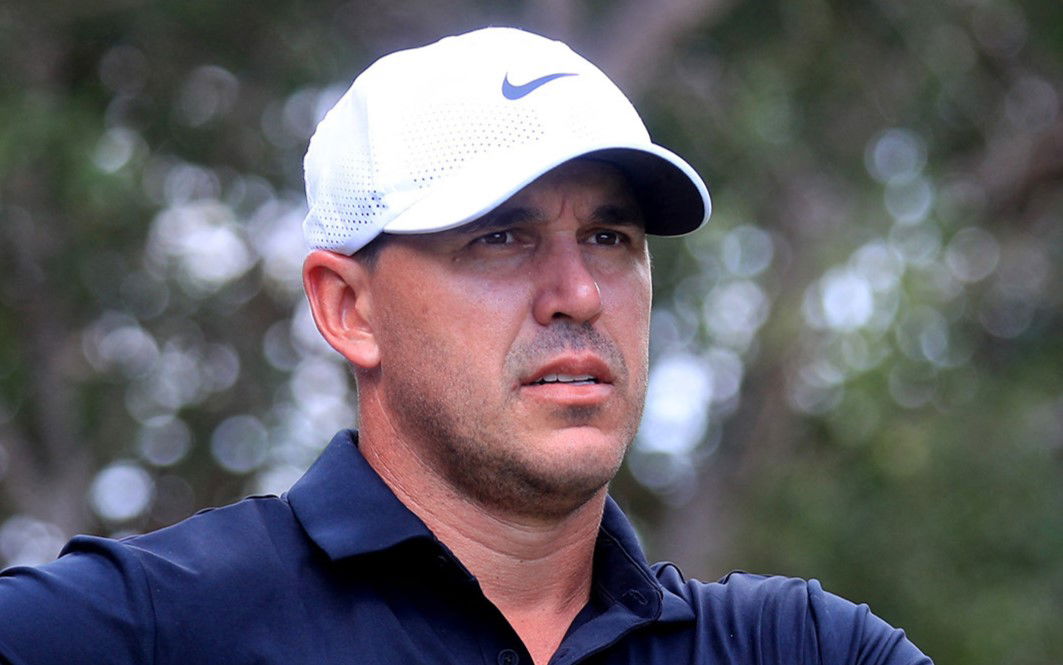Common touch made Arnold Palmer a golf hero
Arnold Palmer drives from the first tee in the opening round of the 17th Southern Intercollegiate golf tournament at Athens, Ga., April 29, 1954. Associated Press File Photo
Horace Cort
Arnold Palmer served three years in the U.S. Coast Guard, but that didn’t stop him from creating an army later in life.
Later in life, Palmer would say the first time he saw a sign that said “Arnie’s Army” was in 1959, just a few years after the start of his career. And the fans had a big impact on Palmer, just like he had on the fans.
“When I was a boy learning to play golf in my hometown of Latrobe, Pa., I never could have imagined that one day I’d have an ‘Army’ of fans or that people would call me ‘The King’ of the sport I love,” Palmer wrote in “The Arnie’s Army Story” on arnoldpalmer.com. “For me, it started with a dream — to play the game with unmatched perfection. As I pursued that dream you were there with me every step of the way, at every tournament, in every town, cheering me on, united as Arnie’s Army.”
Born in September 1929, Palmer’s father worked as a greenskeeper at the Latrobe Country Club in Latrobe, in Westmoreland County, before becoming the club professional. That love of the sport rubbed off.
Palmer went to Wake Forest on a golf scholarship, but in 1951, he interrupted his education after the death of a friend and joined the U.S. Coast Guard. He’d serve three years before returning to school.
But, according to an article from the U.S. Golf Association, even that didn’t stop him from playing. While in basic training in Cape May, N.J., Palmer designed and built a nine-hole course he could use to keep his skills sharp.
U.S. pro Arnold Palmer fires from gulley in approach to the fourth green in the opening round of play of Canada Cup Golf Championship at Portmarnock, Ireland, June 23, 1960. Associated Press
After his enlistment, Palmer competed in and won the 1954 U.S. Amateur, held in Detroit.
“That victory was the turning point in my life,” he said later on. “It gave me confidence I could compete at the highest level of the game.”
In 1955, he joined the PGA Tour and notched his first victory. In 1958, he won his first Major — The Masters. He’d go on to win The Masters again in 1960, 1962 and 1964. He’d also win The U.S. Open in 1960 and The British Open in 1961 and 1962.
Palmer’s unique blend of charm, good looks and undeniable skill made him the first golf star of the television age, setting a template for everyone from near contemporary Jack Nicklaus to latter day superstar Tiger Wood.
“Palmer’s combination of matinee-idol looks, charisma and blue-collar background made him a superstar just as golf ushered in the television era,” Adam Schupak wrote in Golfweek’s obituary of Palmer. “He became Madison Avenue’s favorite pitchman, accepting an array of endorsement deals that generated millions of dollars in income on everything from licensed sportswear to tractors to motor oil and even Japanese tearooms.”
Arnold Palmer, center standing, argues a rules point at the 12th hole after his ball became embedded in the mud during final round of the Masters Golf Tournament at Augusta National Golf Club in August, Ga., April 6, 1958. Associated Press
Palmer would go on to play golf professionally for more than 50 years, first on the PGA Tour, then with the PGA Senior Tour, finally hanging up his spikes in 2006.
By then, he’d been one of the most popular golfers for decades, the leader of Arnie’s Army.
In Palmer’s obituary, Schupak credited the way he treated fans.
“But in a life bursting from the seams with success, Palmer never lost his common touch,” Schupak wrote. “He was a man of the people, willing to sign every autograph, shake every hand, and tried to look every person in his gallery in the eye.”
Tiger Woods, left, and Arnold Palmer talk during the trophy presentation after Woods won the Arnold Palmer Invitational golf tournament at the Bay Hill Club in Orlando, Fla., March 16, 2008. Associated Press
Phelan M. Ebenhack
Arnold Palmer signs autographs after completing his round during the first round of the Administaff Small Business Classic Friday, Oct. 13, 2006 in Spring, Texas. Palmer said this was his last competitive round of golf. Associated Press
DAVID J. PHILLIP
Related
Brooks Koepka announces shock split ahead of 2025 LIV Golf…
Brooks Koepka has split with his long-time golf coach Claude Harmon III ahead of the 2025 LIV Golf League season, according to Golfweek. Koepka, 34, confirmed
Arizona Adaptive Golf Open Showcases Ability
AZ Adaptive Golf category winners celebrate victory,Candace Oehler Golf Is For Everyone Unseasonably windy and chilly weather didn’t deter the nearly 60 golf











)